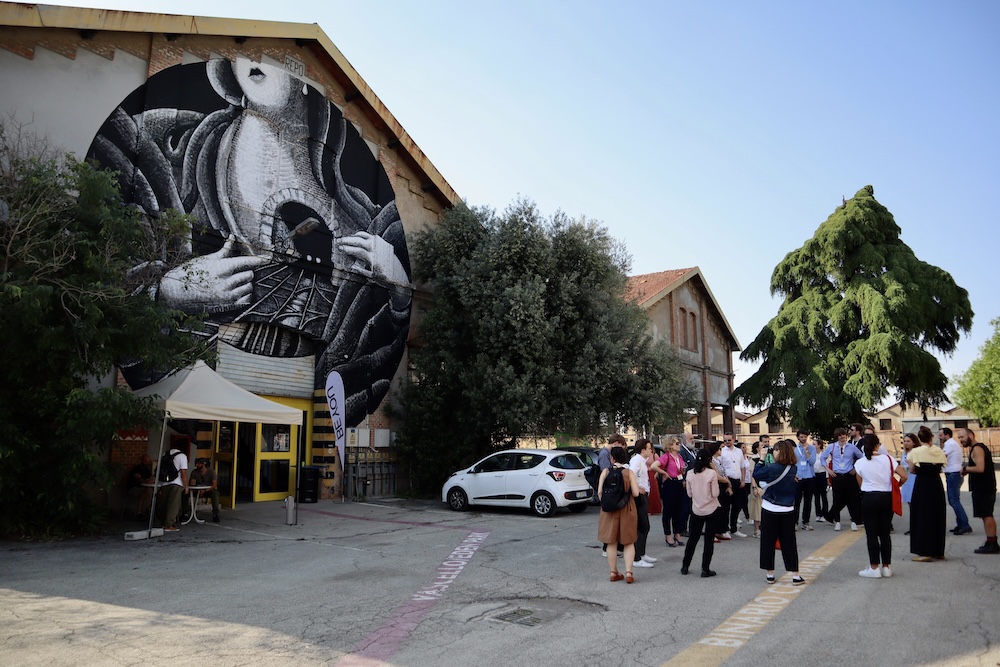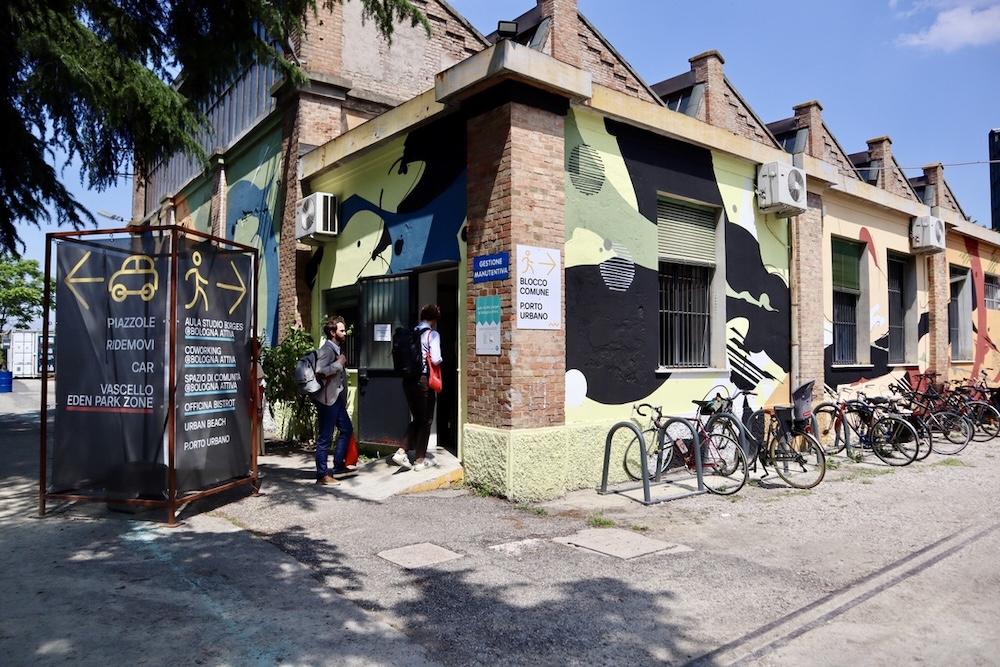NEB ambition
The ultimate ambition of the New European Bauhaus is to achieve transformation. To do this, the NEB Compass has identified specific levels of ambition that outline the desired outcomes for each of the NEB values.
The ultimate ambition of the New European Bauhaus is to achieve transformation. To do this, the NEB Compass has identified specific levels of ambition that outline the desired outcomes for each of the NEB values.
These areas refer to the five key domains of intervention that CrAFt's New European Bauhaus Impact Model considers essential for guiding and evaluating complex urban initiatives.
The participation level refers to the degree or extent to which individuals or groups are actively involved or engaged in a particular activity, project, or process. It assesses the depth of their involvement, contributions, and commitment, ranging from minimal or passive participation to active and dedicated participation.
The New European Bauhaus (NEB) aims to promote the values of sustainability, aesthetics, and inclusion in the design and transformation of urban spaces. It emphasises the integration of environmental, social, and economic considerations to create harmonious and innovative living environments.
According to the Smart City Guidance Package, there are seven stages to plan and implement smart city projects. These stages propose a logical and coherent roadmap for city initiatives involving many stakeholders.
One of the many activities conducted by the CrAFt team involves urban sandboxing in three European cities: Amsterdam, Prague and Bologna.
Urban sandboxing refers to creating temporary, low-cost and adaptable interventions in public spaces within a city, typically to test new ideas, designs or policies before committing to permanent changes. The term ‘sandbox’ is based on the idea of a play ground where children are encouraged to experiment and test their ideas without fear of failure.
Similarly, urban sandboxing encourages experimentation in public spaces to improve the urban environment and enhance the quality of life for residents. This approach often involves collaboration between urban planners, designers, community members and other stakeholders to create innovative and flexible solutions that can be adapted and refined over time.
Urban sandboxing can take many forms, including popup parks, temporary bike lanes, community gardens and public art installations. By providing a platform for experimentation and collaboration, urban sandboxing can help cities to become more resilient, sustain able, and responsive to the needs of their residents.
In the case of the CrAFt Sandbox City of Bologna, the University of Bologna in collaboration with the Municipality identified several urban areas that are abandoned and degraded. These areas represent a unique opportunity to regenerate through experimental interventions in collaboration with a wide array of stakeholders, including local business, grassroots organisations, public institutions and academia.
Bologna is home to a particular project, a temporary urban regeneration space called DumBO.
The name stands for Distretto Urbano Multifunzionale di Bologna, and it’s a place where creativity, culture and community collide.
The old railyard where DumBO is located is almost 40,000 square metres. It remains the property of FS Sistemi Urbani – a company 100% owned by the Italian State Rail ways – that has the task of redeveloping and enhancing infrastructures that are no longer functional for railway operations. The space is temporarily licensed for four years to a joint venture composed of Open Group and Eventeria. The area includes six buildings totalling over 18,000 square meters, plus 20,000 square metres of outdoor space.

Sheds and open areas have been trans formed into spaces for social activities, art, music and sports, all in close relation to the sur rounding territory. But DumBO is much more than just a temporary multifunctional space. It’s a project that combines social integration, entertainment, culture, experimentation, sustainability and collaboration. DumBO is, therefore, a place where associations, businesses and citizens can collaborate and contaminate each other’s ideas, fostering new and innovative approaches to city development.
The project involves a strategic area of the city, and it has a solid experimental con notation as an example of the temporary use of spaces open to the territory and citizen participation. To ensure that the project stays true to its values, a Scientific Committee was created with consulting functions to support the method and the path of co-design of activities and the use of space.
The Scientific Committee includes some of the most influential players in the community, such as the Comune di Bologna, Dipar timento Cultura e Promozione della città, Fondazione per l’Innovazione Urbana, Lega coop Bologna and Performa Architettura + Urbanistica. They work together to ensure the project remains inclusive, sustainable and innovative.
Here the focus is not only on economic development but also on inclusion through the pro motion of everyday life practices that reflect the collective narrative of the different communities in the area.
The DumBO project promotes a local identity that celebrates the urban landscape and engages professionals, artists, and society in a collaborative effort to regenerate abandoned spaces. By reusing these areas and integrating collective expressions of art, DumBO serves as a co-collaborative example of urban regeneration.

In essence, the New European Bauhaus principles form the foundation of the DumBO project, which encourages sustainability and economic development through the inclusive and alternative approach of the community. The result is a unique urban space that embodies the spirit of collaboration, creativity, and renewal.
Different communities coexist in DumBO. Each has unique expressions and initiatives that pro mote a sustainable, inclusive and beautiful way of living and observing the city. From public debates to live art, the citizens are active contributors to the project and participate in the whole process.
Activities are organised for all people, from children to vulnerable groups and older people. People with special needs are included in activities such as the sustainable mobility – cicloturismo – events which takes place in the spring term.
It’s heartening to see that DumBO’s design process is open and inclusive, thanks to the co-creative and co-collaborative approach. For example, the project Bologna Attiva is a shin ing example of public engagement with the citizens. Located within DumBO, it is a human, urban, and social regeneration project that aims to experiment with new responses to the challenges posed by the changing world of work.

At Bologna Attiva, a significant number of co-working spaces, study rooms, proximity services for students, professional accompaniment paths, mutualism and cultural and community activities have been created. Its objectives are to redefine the spaces of DumBO in line with the needs expressed by the city and the neighbourhood, favouring a civic re-appropriation of the area.
Indeed, in DumBO, it’s not just about the project itself but about the people around it who come together to promote a more sustainable, inclusive, and beautiful way of living.
Written by Jose Rodriguez, European Cultural Foundation, in collaboration with Konstantina Douka and Leonardo Camelli, researchers at the University of Bologna.
Photography by José Rodríguez, European Cultural Foundation.